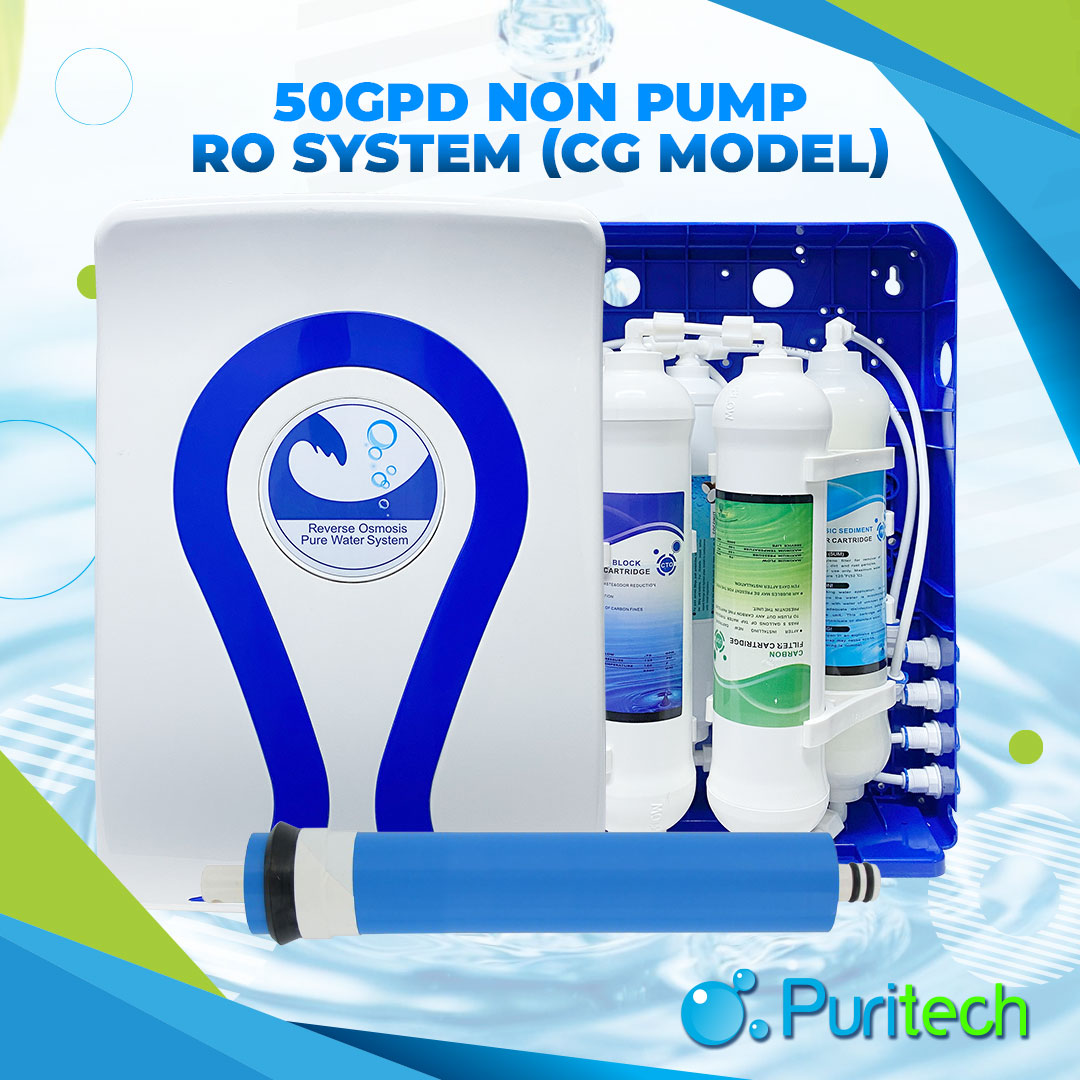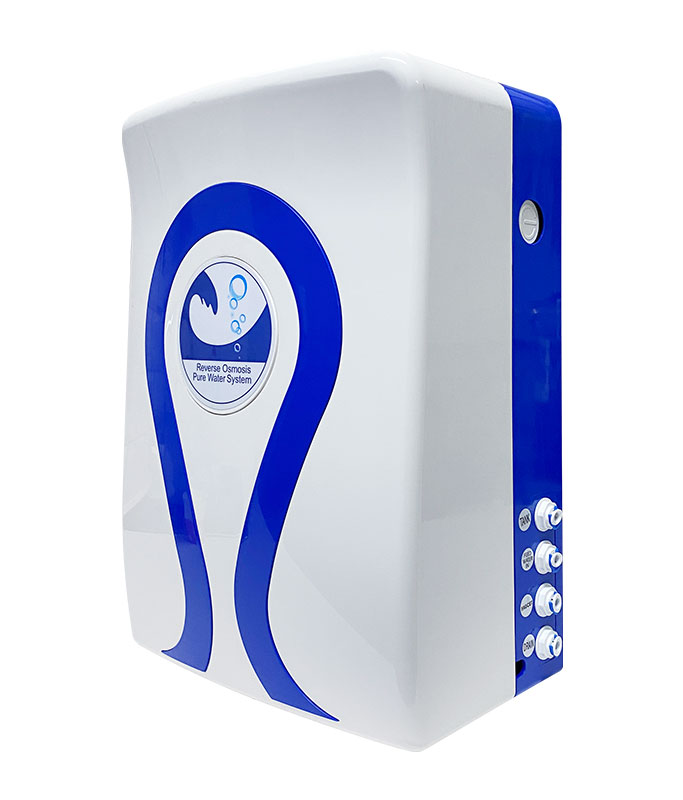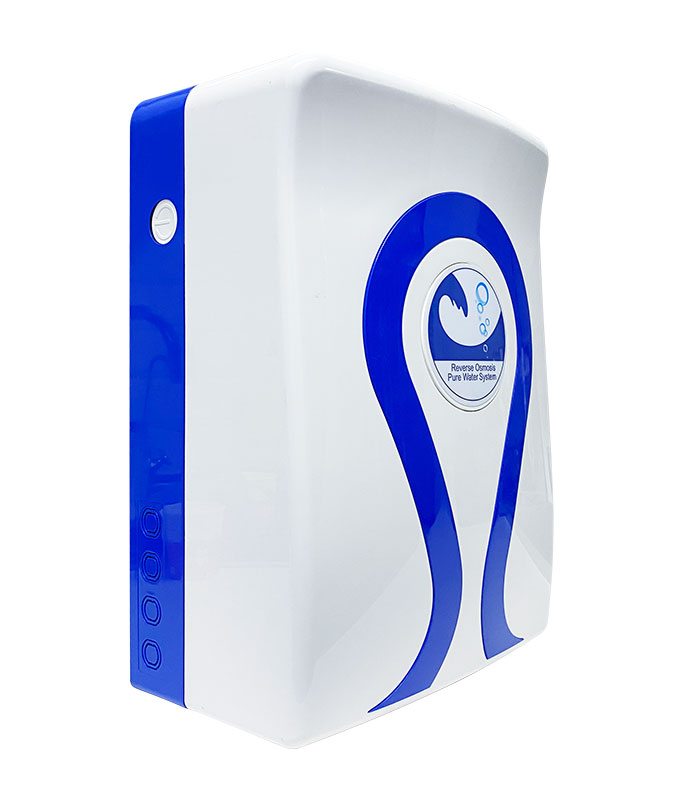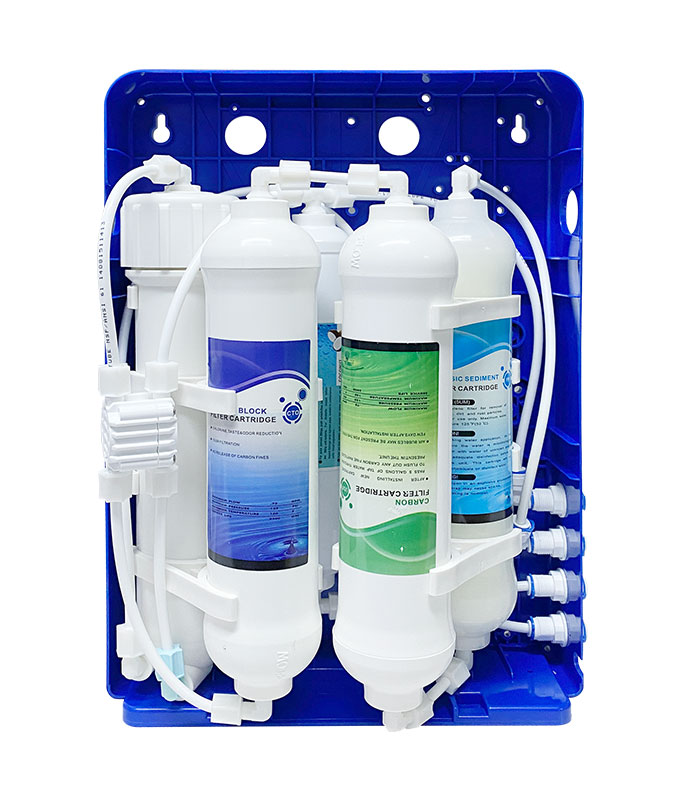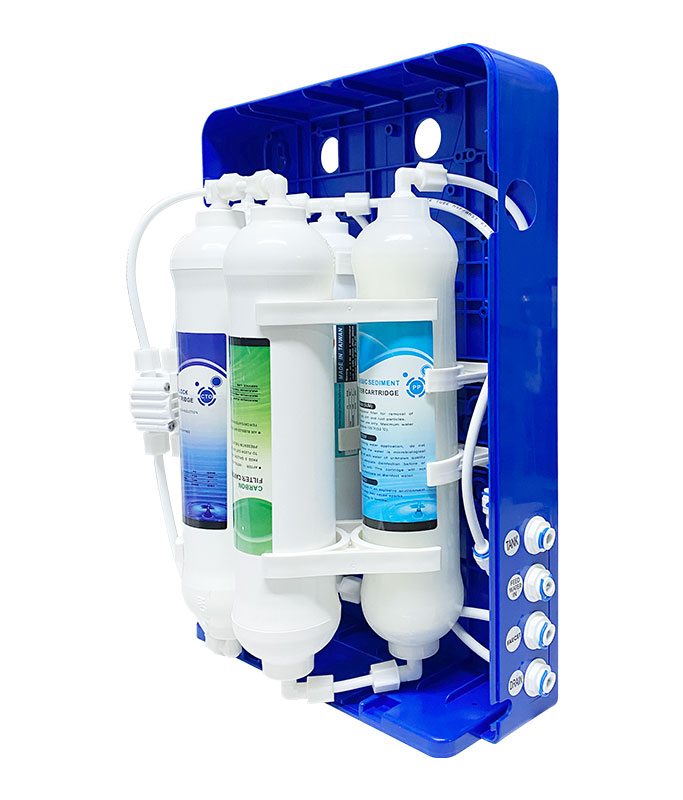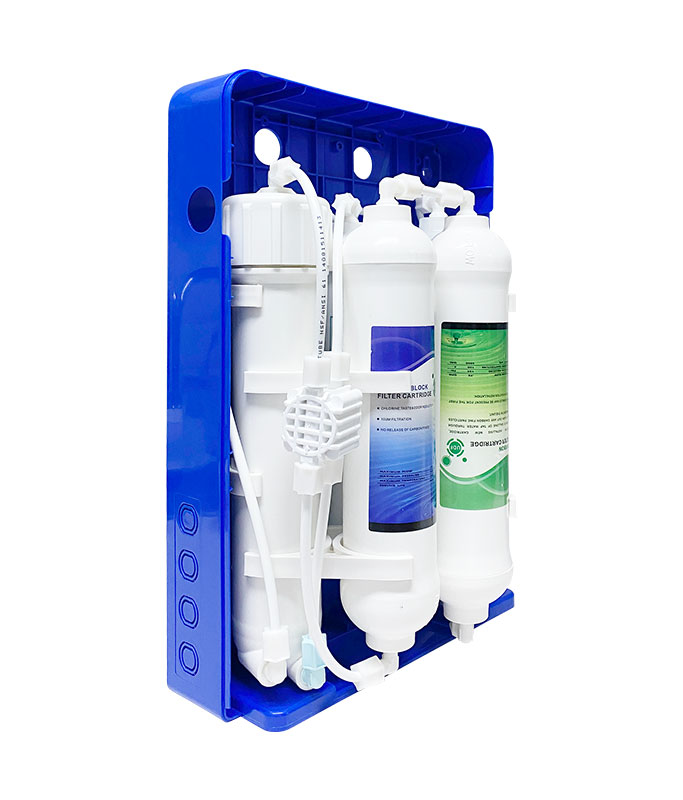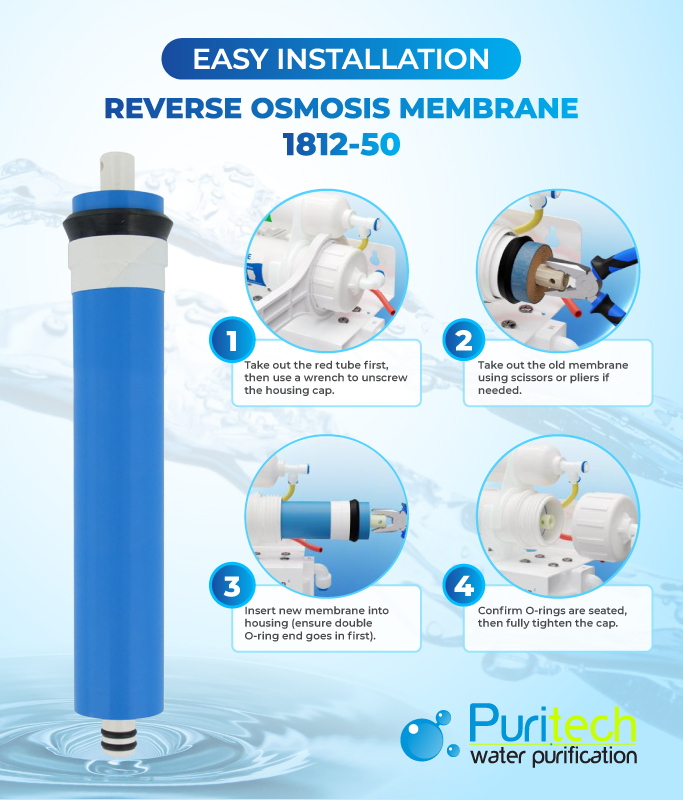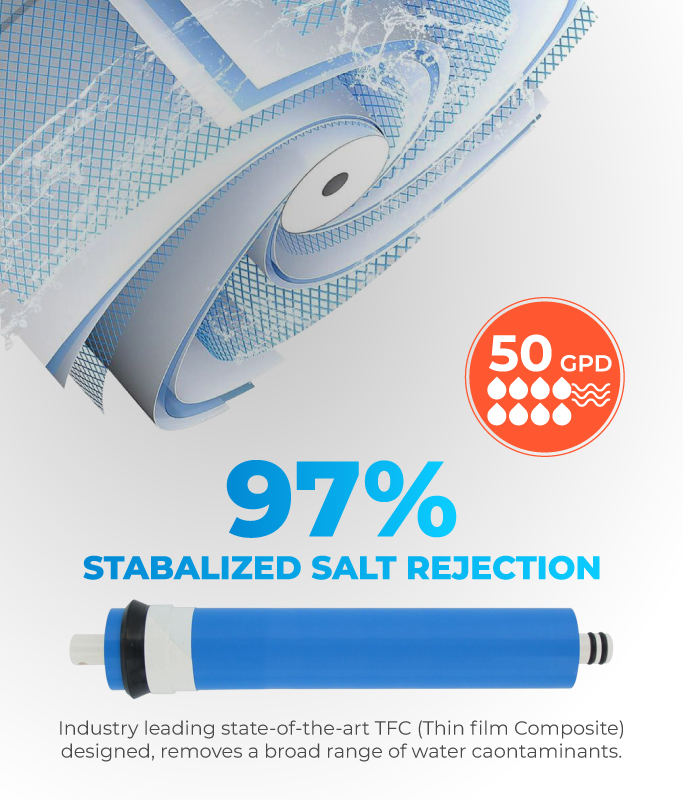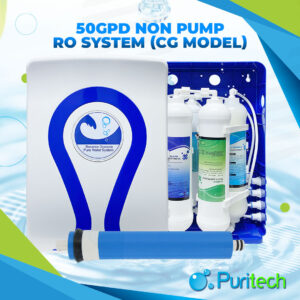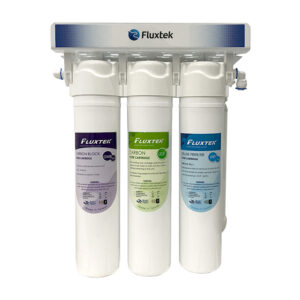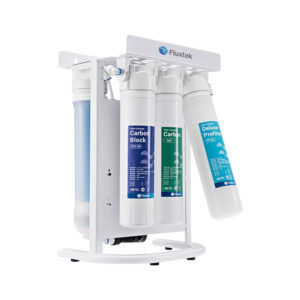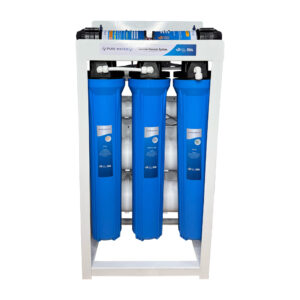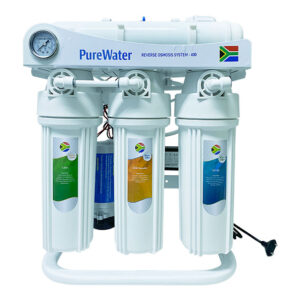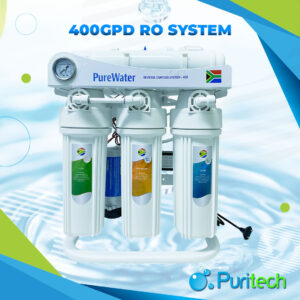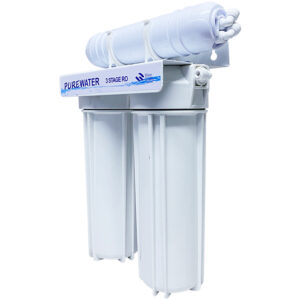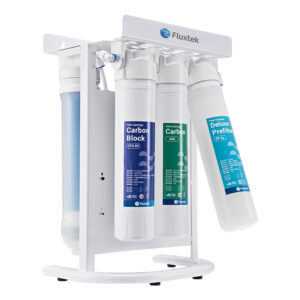Currently Empty: R0.00
The Fluxtek 50GPD Domestic Compact Reverse Osmosis System is the perfect solution for homes looking for efficient, high-quality water filtration in a modern, space-saving design. Encased in a sleek blue and white plastic housing, this system provides a 5-stage advanced filtration process, ensuring crystal-clear, great-tasting water directly from your tap.
Next day delivery in store
Buy before 6pm to receive your order next day.Next day delivery
Orders before 6pm from Monday to Saturday (or before 1pm on Sunday) will be delivered Next working day (except Northern Ireland and Highlands). Orders placed after 6pm (after 1pm on Sunday) or for Northern Ireland and Highlands will be delivered in 2 working days.Drop Point
In 2-3 working days. Pick up your parcel in one of the many diferent collection points available and during a wide range of hours.Same day delivery in London:
Place your order before 13:00 to get it today!. If you order later on, you’ll receive it the next day and if you order on Sunday, you’ll receive it the next working day.SHIPPING
Complimentary ground shipping within 1 to 7 business days In-store collection available within 1 to 7 business days Next-day and Express delivery options also available Purchases are delivered in an orange box tied with a Bolduc ribbon, with the exception of certain items See the delivery FAQs for details on shipping methods, costs and delivery timesCharacteristics of wood :
- Hard, compact , fiberous and porous
- Good wood gives a rich, warm and beautiful surface.
Wood is used for the construction of:
- Floor, Furniture, Walls
- Incidental furnishing (lampshades, picture frames)
- Kitchen & restaurant ware
Description
Premium Filtration in a Sleek, Space-Saving Design
Advanced Purification for Clean, Fresh & Healthy Drinking Water
The Fluxtek 50GPD Domestic Compact Reverse Osmosis System is the perfect solution for homes looking for efficient, high-quality water filtration in a modern, space-saving design. Encased in a sleek blue and white plastic housing, this system provides a 5-stage advanced filtration process, ensuring crystal-clear, great-tasting water directly from your tap.
This system is available without a pump, making it ideal for high water pressure environments. Whether you’re looking for standard operation or enhanced performance, Fluxtek delivers pure water effortlessly.
Reliable, Space-Saving, and Cost-Effective Water Purification for Your Home
Enjoy Pure, Great-Tasting Water—No Pump Needed!
The Fluxtek 50GPD Compact Reverse Osmosis System (Without Pump) is a premium under-counter water filtration system, designed for homes with adequate water pressure (3 bar or higher). This advanced 5-stage purification system ensures that every drop of water you drink is clean, fresh, and free from harmful contaminants.
Unlike bulky filtration units, this system features a modern, compact design enclosed in a sleek blue and white plastic case, protecting the filters while maintaining an organized and space-saving layout.
Whether you’re filling up a glass of water, cooking, or making coffee, the Fluxtek 50GPD RO system guarantees high-quality, purified water on demand—straight from your kitchen tap.
🚰 5-Stage Advanced Filtration System
Each stage of the Fluxtek 50GPD Reverse Osmosis System is engineered to remove specific contaminants, ensuring your water is safe, clear, and great-tasting:
✔ Stage 1: PP Sediment Filter (K33) – Removes large impurities like rust, dirt, sand, and suspended particles, protecting the other filters from clogging.
✔ Stage 2: Granular Activated Carbon (GAC) Filter (K33) – Eliminates chlorine, volatile organic compounds (VOCs), bad odors, and harmful chemicals.
✔ Stage 3: Carbon Block (CTO) Filter (K33) – Further removes chlorine, taste-altering chemicals, and organic pollutants, ensuring improved water quality.
✔ Stage 4: 1812 50GPD Reverse Osmosis Membrane – This is the heart of the system, filtering up to 99% of dissolved solids, including lead, arsenic, fluoride, heavy metals, and bacteria.
✔ Stage 5: T33 Post Carbon Filter – Acts as a final polishing stage, enhancing water taste by eliminating any residual odors or chemicals.
💡 Key Contaminants Removed:
✅ Sediments (sand, dust, rust, and dirt)
✅ Chlorine and chloramine
✅ Heavy metals (lead, mercury, arsenic, etc.)
✅ Fluoride and nitrates
✅ Volatile Organic Compounds (VOCs)
✅ Bacteria, viruses, and cysts
✅ Pesticides and industrial pollutants
🔹 Key Features & Benefits of the Fluxtek 50GPD RO System (Without Pump)
1️⃣ Compact & Stylish Blue and White Housing
Unlike traditional open-frame RO systems, the Fluxtek 50GPD features a durable plastic enclosure, keeping filters protected while enhancing the aesthetic appeal of your kitchen setup.
2️⃣ No Pump Required – Energy-Efficient Filtration
Designed for homes with adequate water pressure (3 bar or higher), this system does not require electricity to function. This makes it a cost-effective and energy-saving solution for long-term use.
3️⃣ Space-Saving, Under-Counter Installation
With its compact and enclosed design, this system fits perfectly under your kitchen sink, keeping your filtration setup organized and clutter-free.
4️⃣ High-Capacity 50GPD RO Membrane
Capable of purifying up to 50 gallons per day, this system ensures you have clean and safe water available whenever you need it.
5️⃣ Great-Tasting Water for Multiple Uses
Not only is the water crisp, refreshing, and free of impurities, but it’s also ideal for:
✔ Drinking
✔ Cooking
✔ Making coffee and tea
✔ Washing fruits and vegetables
✔ Filling up baby bottles
6️⃣ Long-Lasting, High-Quality Filters
Each filter in the Fluxtek RO system is designed for durability, with easy-to-replace cartridges that ensure uninterrupted filtration.
🔹 Is the Fluxtek 50GPD RO System (Without Pump) Right for You?
✔ ✅ YES! If you have a water pressure of 3 bar or higher – This system works efficiently without requiring a pump.
✔ ✅ YES! If you want a space-saving design – The compact enclosed housing keeps everything neat and organized.
✔ ✅ YES! If you want great-tasting, purified water – The 5-stage filtration removes contaminants and enhances taste.
✔ ✅ YES! If you want an energy-efficient solution – This system does not rely on electricity, making it cost-effective.
🔹 Technical Specifications
✔ Filtration Stages: 5-Stage Filtration
✔ Flow Rate: 50 Gallons Per Day (GPD)
✔ System Type: Under-Counter Compact Reverse Osmosis System
✔ Operating Water Pressure: Minimum 3 Bar Required
✔ Housing Material: Blue & White Plastic Case
✔ Filter Type: K33 Pre-Filters, 50GPD RO Membrane, and T33 Post Carbon Filter
✔ Pump: ❌ Not included (For homes with low pressure, consider the pump-assisted version)
✔ Application: Residential use (home, apartments, small office spaces)
🔹 Why Choose the Fluxtek 50GPD RO System (Without Pump)?
🔹 Advanced 5-Stage Filtration – Eliminates chlorine, heavy metals, bacteria, and other contaminants.
🔹 Compact, Fully Enclosed Design – Space-saving and aesthetically pleasing for modern kitchens.
🔹 Energy-Efficient & Cost-Effective – No electricity required, perfect for low-maintenance water filtration.
🔹 Perfect for High Water Pressure Homes – Works seamlessly without a pump, ensuring high performance.
🔹 Great-Tasting Water at Your Fingertips – Enjoy clean, refreshing, and healthy water every day.
📞 Order the Fluxtek 50GPD Reverse Osmosis System (Without Pump) today and experience premium water filtration at home!


